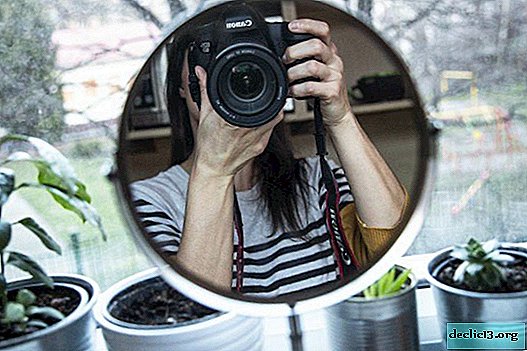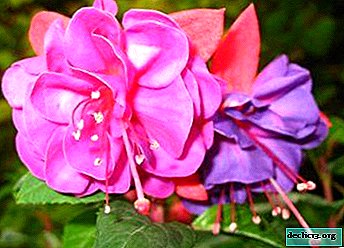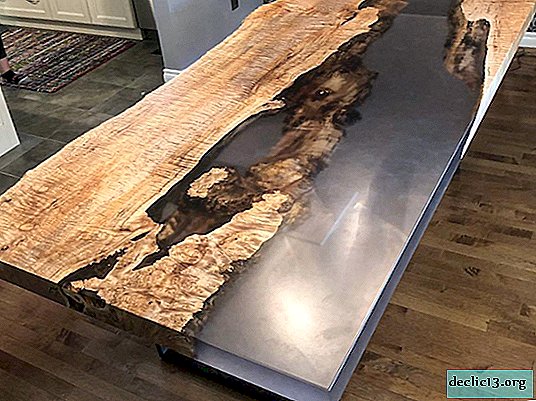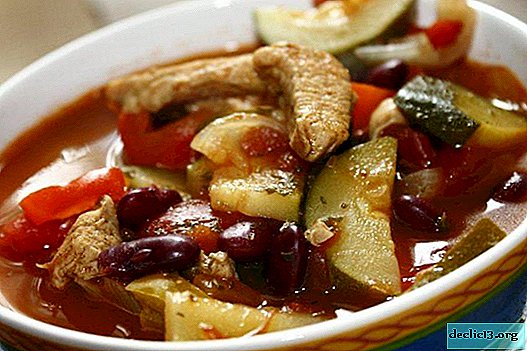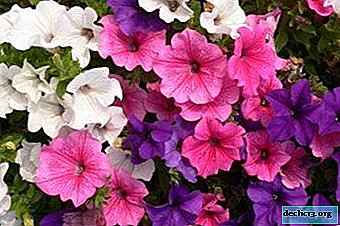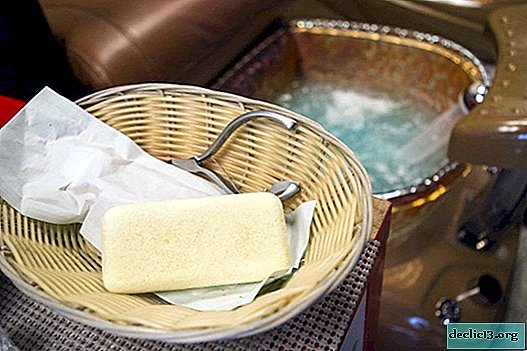Useful and beautiful pelargonium: Edwards Elegans, Tuscany and other varieties, even for the most sophisticated gardeners
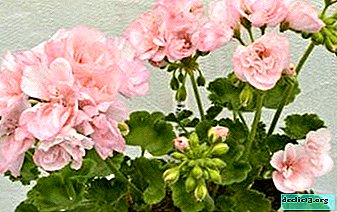
We are all familiar with this flower. They say a lot about pelargonium: this mainly concerns its various beneficial properties. Pelargonium infusion is a good remedy for hypertension, as well as for insomnia. A compress from pelargonium draws pus from the wounds and contributes to their rapid healing. With all the medicinal properties of pelargonium, you do not need to self-medicate. Take funds only under the supervision and on the recommendations of your doctor.
Lovers of flowering plants appreciate pelargonium for abundant flowering, which lasts almost all year round. It is also encouraging that the cultivation and care do not cause much concern. Although some call the flower "grandmother", more than seven thousand varieties of pelargonium are now bred. Everyone, even the most sophisticated florist, will be able to choose a variety to their taste.
Botanical Description
Pelargonium is a perennial plant that has branched stems and simple palmate leaves. The color of the flowers may vary depending on the variety. They are collected in multi-flowered umbrella-shaped compounds.
The fruit is a box with persisting sepals, which opens in a special way, from the bottom to the top.
History of occurrence
Pelargonium is a guest from South Africa. It adapts very well to the environment.
Reference. But you need to remember that in open ground the plant does not winter. It must be transplanted into a pot and placed in a warm, bright place.Speaking about the price of the issue, you need to understand that it also varies depending on the location of the buyer and the selected type or variety of pelargonium. On average, you can buy a bush preparing to bloom for 500 rubles.
Edwards toscana
The Edwards Toscana plant (Edwards Tuscany) makes an incredible impression. The green bush has many branches, at the end of which large bright red inflorescences blossom. In a state of half-life, flowers are similar to roses. Inflorescences can reach 10 centimeters in diameter.

Edwards elegance
This The variety is very popular. Florists love the pelargonium Edwards Elegance (Edwards Elegans) for the amazingly beautiful shade of the flower. It can have various options: from pale pink to peach. The bush of the plant is low, has green terry leaves.

Planting a plant
If you decide to acquire pelargonium, then you need to remember simple rules.
- The plant is photophilous. If planting in the garden, choose a well-lit area. In the apartment, pelargonium will comfortably settle on the windowsill or loggia from the sunny side.
- You can buy soil for planting in a specialized store or prepare it yourself. To do this, mix in equal parts turf land, leaf land, sand, humus and peat. The plant will benefit if supplementation is high in phosphorus.
You can cook the food yourself. It is necessary to prepare seeds for planting from March. To do this, use 1 drop of iodine per 1 liter of water.
- Before planting seeds, the soil must be moistened. In order to avoid diseases of seeds and bushes, it is better to treat the substrate with a weak solution of potassium permanganate. Having plunged the seeds into the ground to a depth of about 2.5 cm, you need to spray the soil from the spray gun.
- To achieve a quick effect, it is recommended to cover the container with glass. But do not forget to periodically ventilate your greenhouse, otherwise condensation will form.
- After emergence, the glass must be removed.
- Wait for the first leaves to appear and boldly transplant seedlings into pots.
Flower care
The plant is quite unpretentious, very well takes root in room conditions. In order for the plant to please the grower with abundant flowering as long as possible, the following must be remembered.
- You need to choose a small pot for planting. If the diameter of the container is excessively large, flowering will have to wait a long time. The flower does not bear fruit until the root system takes up all the space allotted.
- Pelargonium tolerates dry periods well. Therefore, you often do not need to water the flower. The frequency of watering depends on the ambient temperature and the length of daylight hours. To determine if a plant needs watering, you need to look at the near-root soil. If it is wet, you should not water it. The plant negatively reacts to excessive humidity. Spraying the flower should not be done.
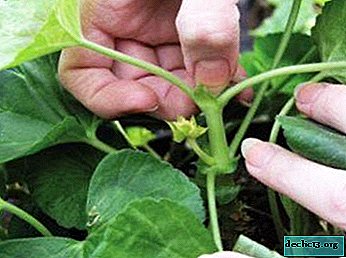 So that the bush is neat, does not grow up, you need to periodically "pinch" the branches. That is, you need to find an escape, preparing for a long and intensive growth, and just break off its tip. New scraps will appear at the place of the scrap.
So that the bush is neat, does not grow up, you need to periodically "pinch" the branches. That is, you need to find an escape, preparing for a long and intensive growth, and just break off its tip. New scraps will appear at the place of the scrap.- In a container for growing good drainage should be provided. Otherwise, excess fluid will accumulate in the soil, which will negatively affect the health of the plant.
- Pelargonium transplantation should not be necessary without need. An adult plant painfully tolerates this operation. Replant the bush only if the roots do not have enough space. And you need to do this very carefully, without injuring the root system.
Common Diseases and Pests
The most common disease of pelargonium is rot of the neck of the root. Root rot may also develop. Decay begins in the event of excessive soil moisture. In this case, the plant cannot be saved, and it will die.
Sometimes gray mold forms on the leaves. It also signals too much soil moisture. If mold has formed on the leaves, then you need to stop watering, dry the soil at the root, bring the plant to the light.
In addition to the above disease, pelargonium is attacked by pests such as whiteflies and aphids. To solve this problem, it is necessary to spray pelargonium with a special solution and remove parasites from the leaves and stem.
Note! Getting rid of them should be started as early as possible, otherwise the pests will multiply and destroy the plant.Propagation Features
Pelargonium propagates in two ways: seeds and cuttings. The planting process, both the first and second methods, is best to start in the spring. About how to plant seeds, it was said earlier.
When propagating by cuttings, you need to know the following:
- The length of the handle should be at least 5 centimeters. The stalk should not be too long: no more than 7 centimeters.
- Before planting the cuttings, it must be left in the open air for 24 hours.
- You need to plant the cuttings in loose soil. The soil must always be wet, otherwise all efforts will be in vain.
- No need to cover the planted cuttings, they should be outdoors.
- After the root is rooted, it needs to be transplanted to a permanent place.
Growing pelargonium and caring for it is not very difficult. Even a beginner grower will cope with this. If you are attentive to your plant, it will delight you with lush flowers throughout the year.

 So that the bush is neat, does not grow up, you need to periodically "pinch" the branches. That is, you need to find an escape, preparing for a long and intensive growth, and just break off its tip. New scraps will appear at the place of the scrap.
So that the bush is neat, does not grow up, you need to periodically "pinch" the branches. That is, you need to find an escape, preparing for a long and intensive growth, and just break off its tip. New scraps will appear at the place of the scrap.